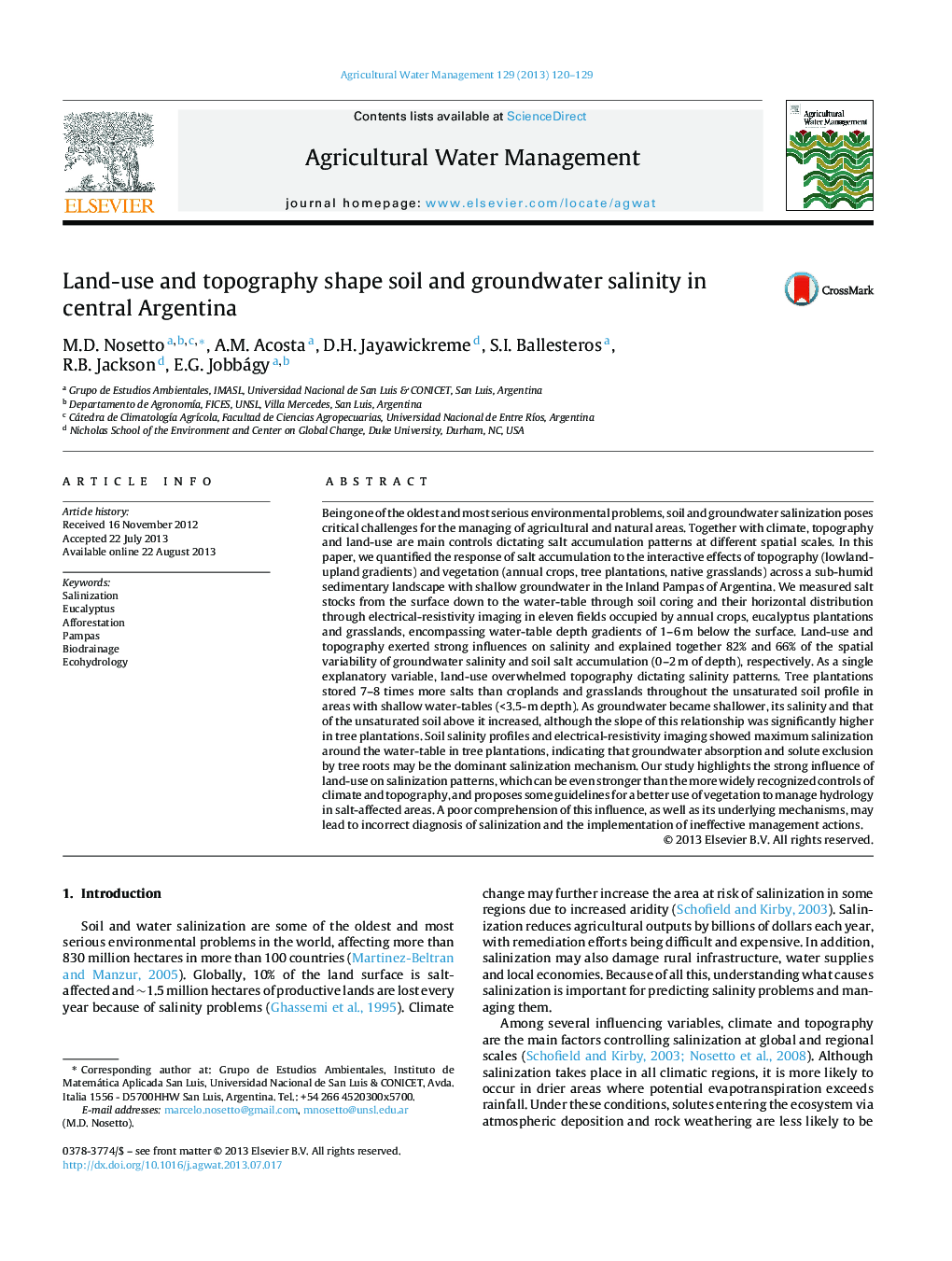| کد مقاله | کد نشریه | سال انتشار | مقاله انگلیسی | نسخه تمام متن |
|---|---|---|---|---|
| 6364049 | 1622950 | 2013 | 10 صفحه PDF | دانلود رایگان |
- Topography and land-use strongly affected salinization patterns.
- Land-use had a stronger influence than topography on salinity patterns.
- Tree plantations stored >7 times more salts in soils than croplands and grasslands.
- Resistivity imaging allowed a cost-effective description of salinity patterns and mechanisms.
Being one of the oldest and most serious environmental problems, soil and groundwater salinization poses critical challenges for the managing of agricultural and natural areas. Together with climate, topography and land-use are main controls dictating salt accumulation patterns at different spatial scales. In this paper, we quantified the response of salt accumulation to the interactive effects of topography (lowland-upland gradients) and vegetation (annual crops, tree plantations, native grasslands) across a sub-humid sedimentary landscape with shallow groundwater in the Inland Pampas of Argentina. We measured salt stocks from the surface down to the water-table through soil coring and their horizontal distribution through electrical-resistivity imaging in eleven fields occupied by annual crops, eucalyptus plantations and grasslands, encompassing water-table depth gradients of 1-6Â m below the surface. Land-use and topography exerted strong influences on salinity and explained together 82% and 66% of the spatial variability of groundwater salinity and soil salt accumulation (0-2Â m of depth), respectively. As a single explanatory variable, land-use overwhelmed topography dictating salinity patterns. Tree plantations stored 7-8 times more salts than croplands and grasslands throughout the unsaturated soil profile in areas with shallow water-tables (<3.5-m depth). As groundwater became shallower, its salinity and that of the unsaturated soil above it increased, although the slope of this relationship was significantly higher in tree plantations. Soil salinity profiles and electrical-resistivity imaging showed maximum salinization around the water-table in tree plantations, indicating that groundwater absorption and solute exclusion by tree roots may be the dominant salinization mechanism. Our study highlights the strong influence of land-use on salinization patterns, which can be even stronger than the more widely recognized controls of climate and topography, and proposes some guidelines for a better use of vegetation to manage hydrology in salt-affected areas. A poor comprehension of this influence, as well as its underlying mechanisms, may lead to incorrect diagnosis of salinization and the implementation of ineffective management actions.
Journal: Agricultural Water Management - Volume 129, November 2013, Pages 120-129
